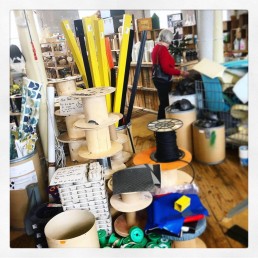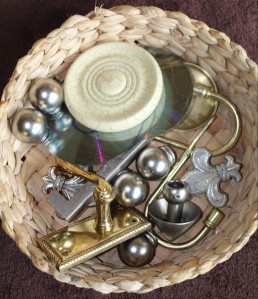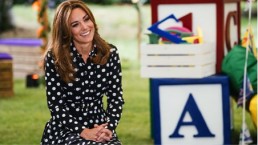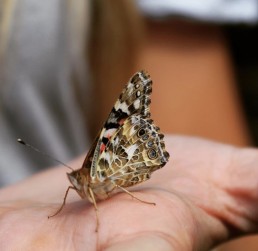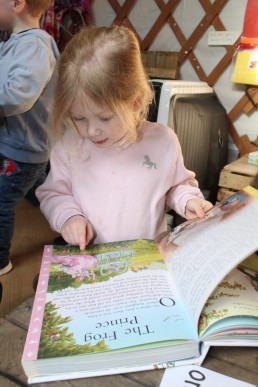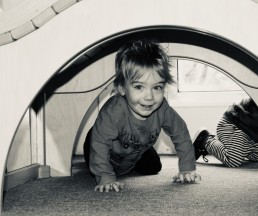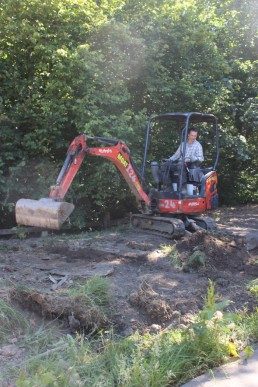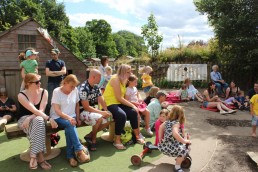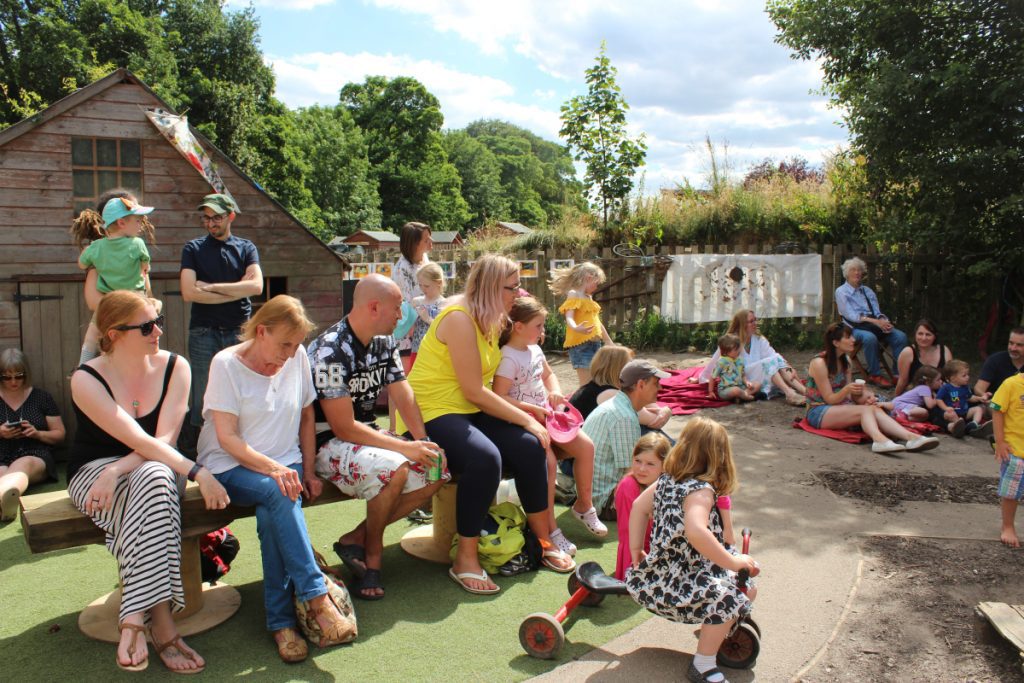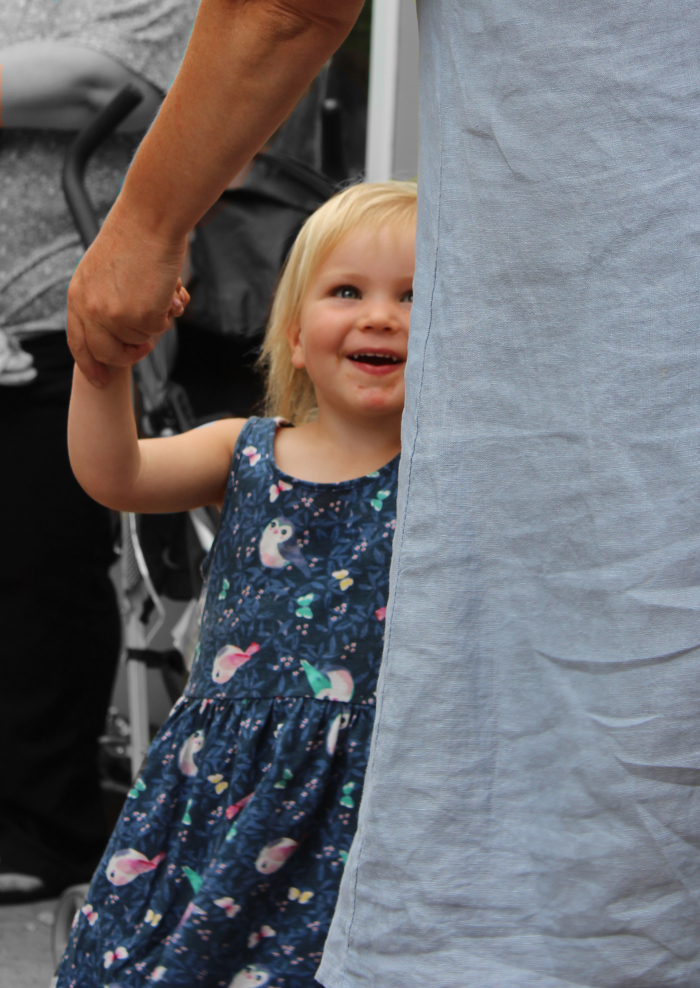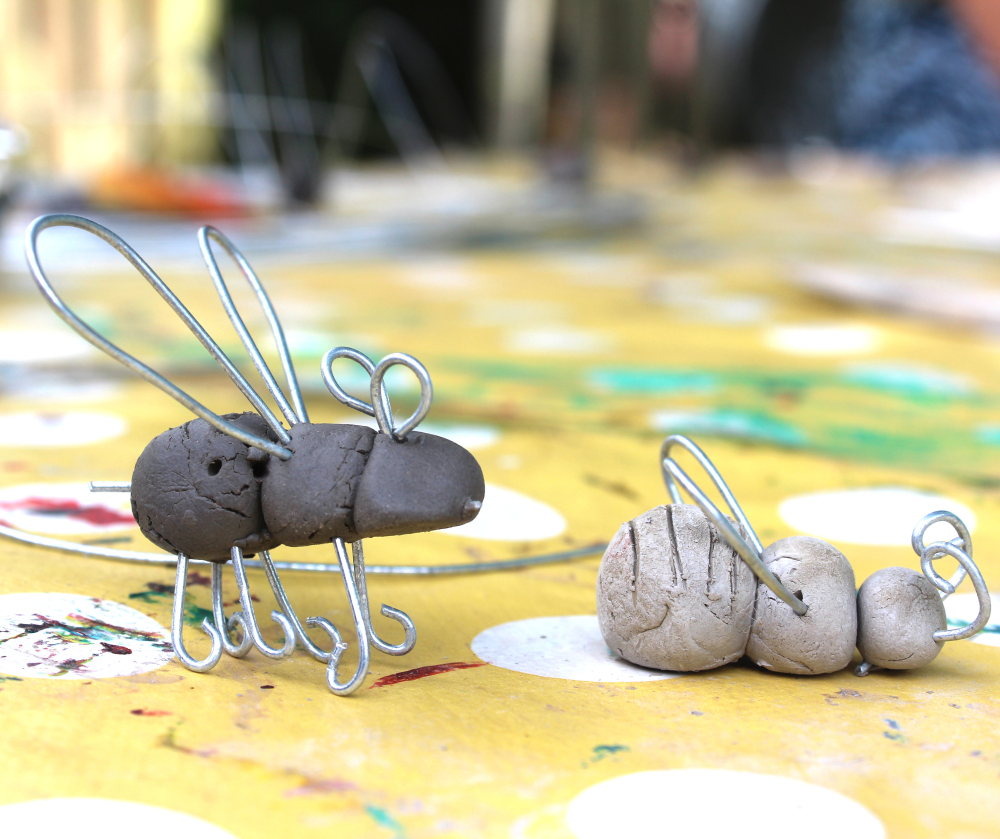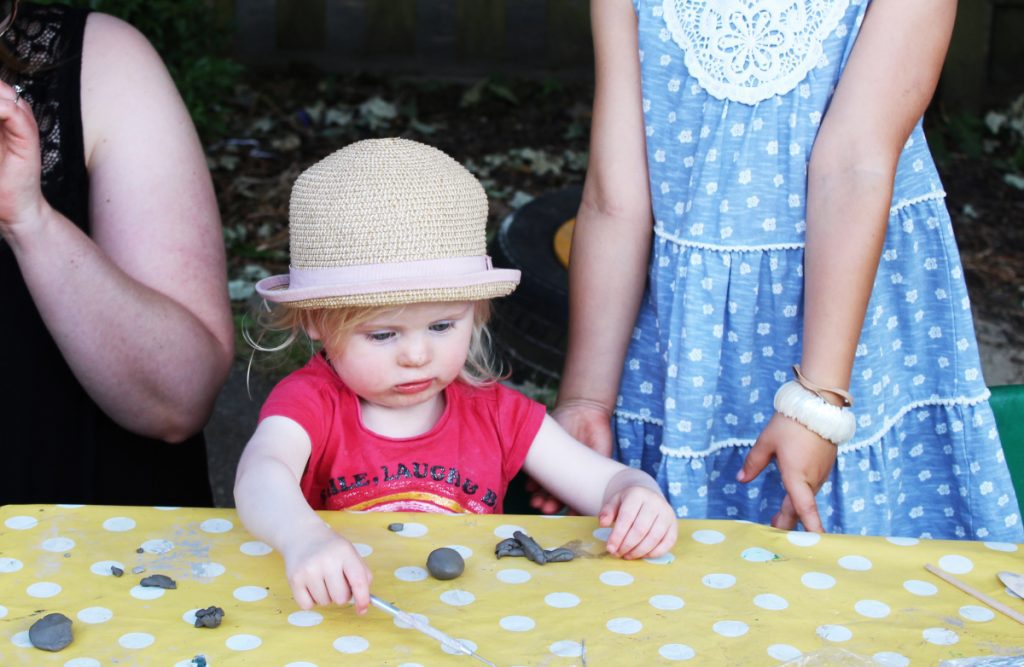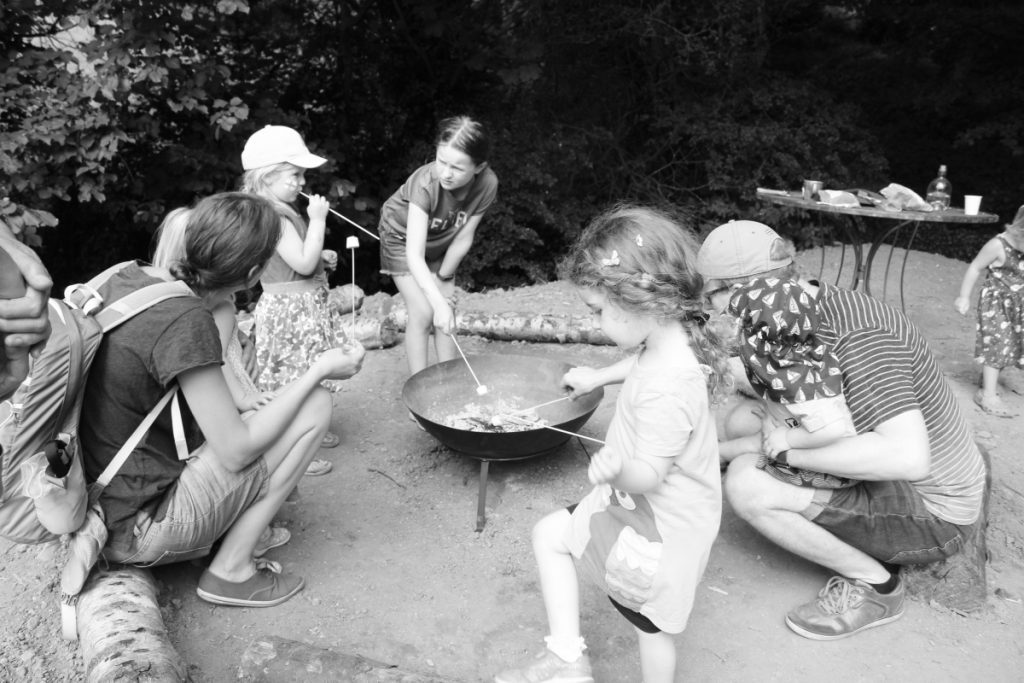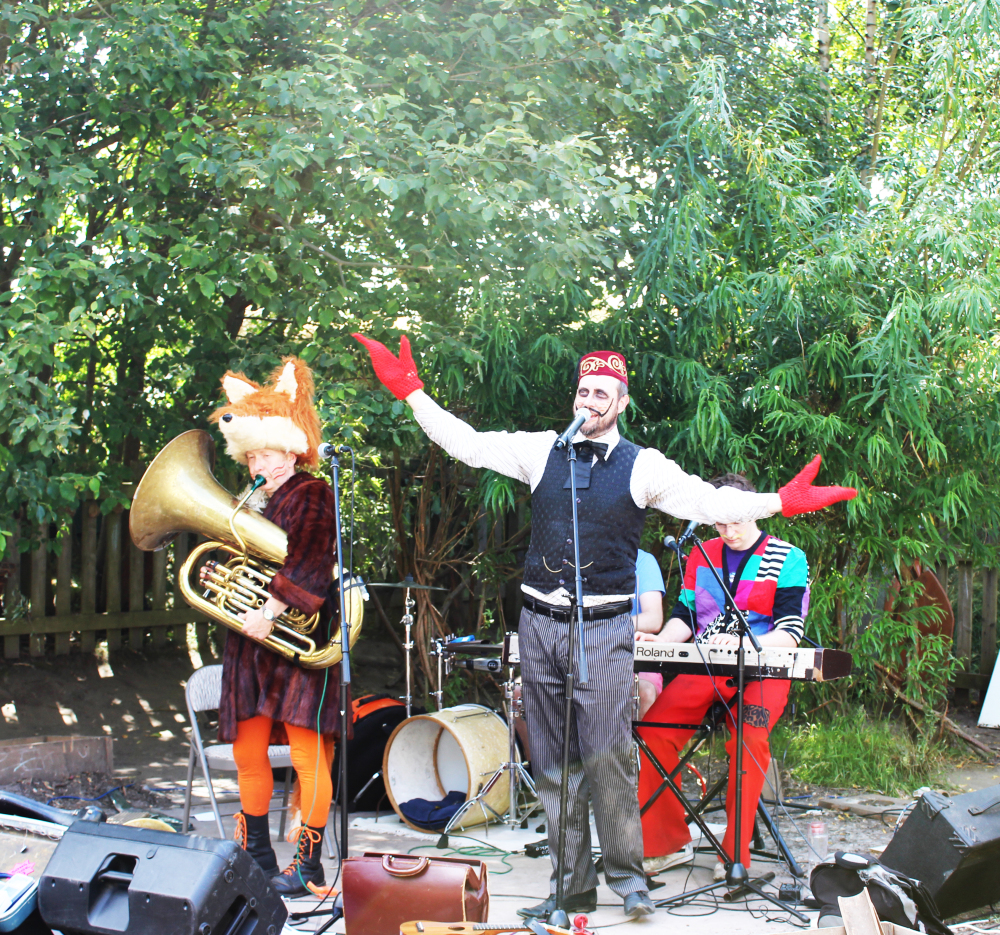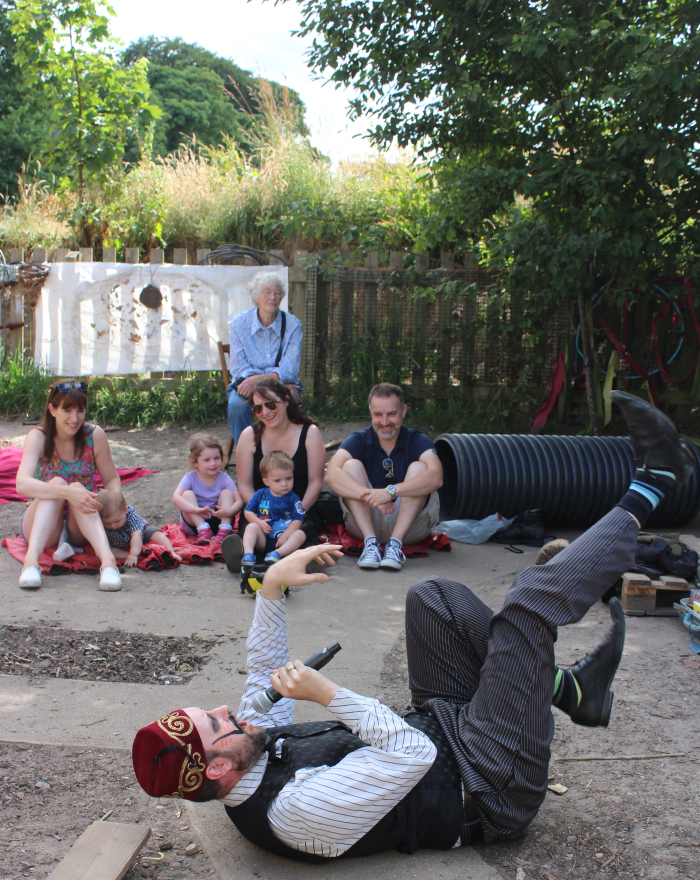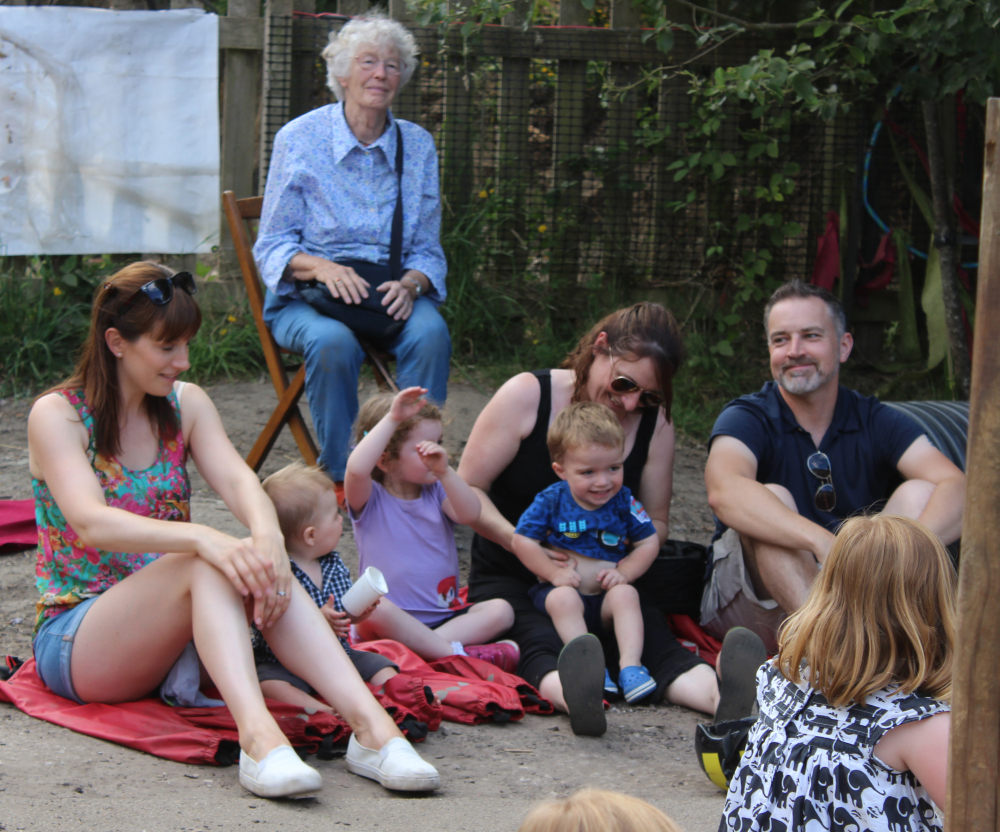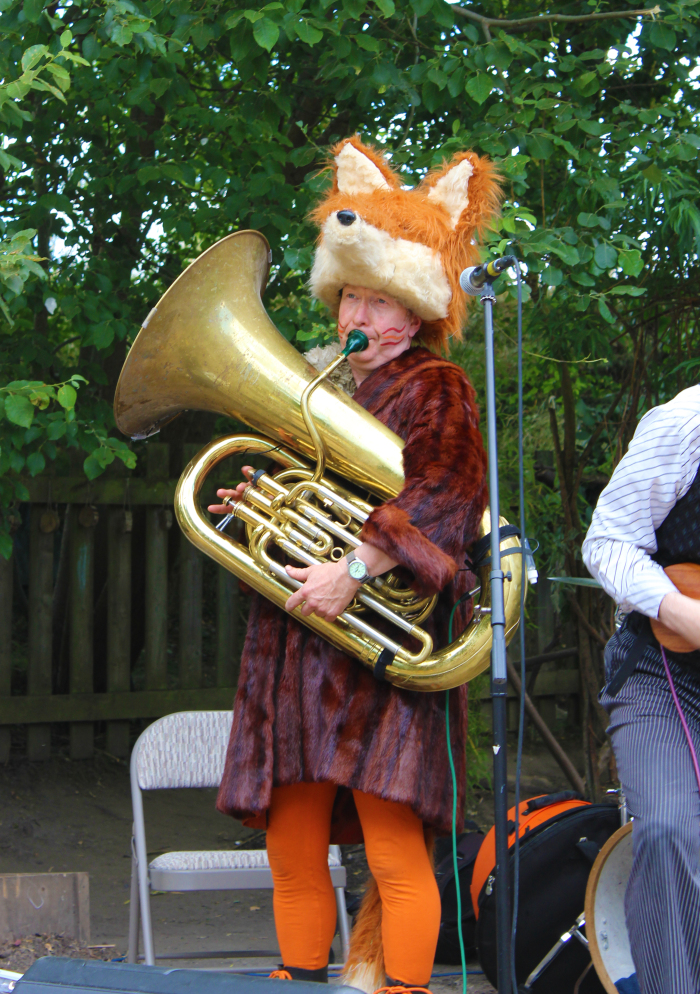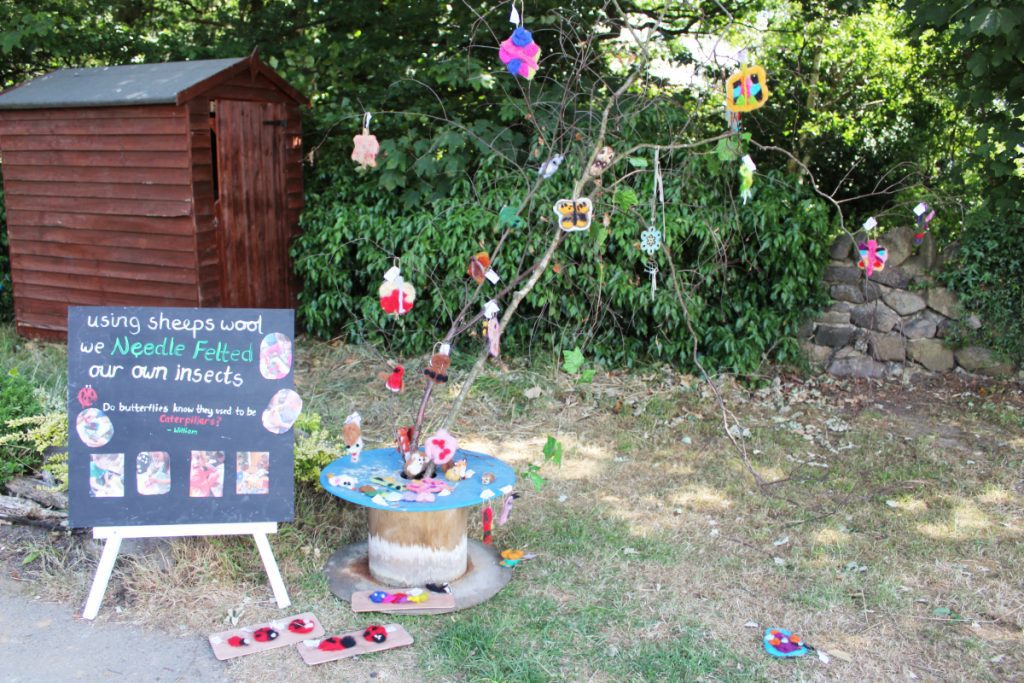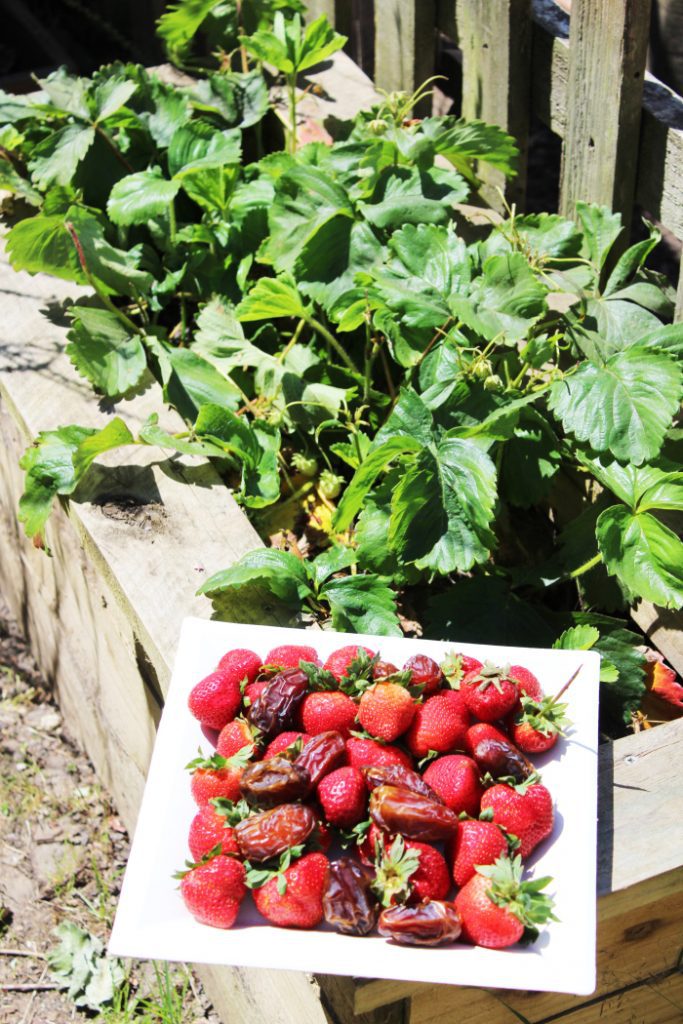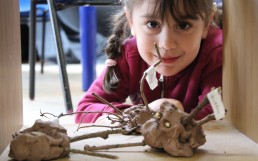Something Out of Nothing
‘In any environment, both the degree of inventiveness and creativity, and the possibility of discovery, are directly proportional to the number and kind of variables in it.” - Simon Nicholson
 As the changing seasons are constantly providing us with natural loose parts, at Inspirations we are constantly adding to our materials and resources, reinventing the classroom and replenishing our supplies. We are always on the look out for cable reels, pallets and tyres locally to ensure our environment is a constant source of stimulation. SCRAP (Scrap Creative Reuse Arts Project Ltd) is one place in particular that provides us with many open ended resources, and this week was time for another haul.
As the changing seasons are constantly providing us with natural loose parts, at Inspirations we are constantly adding to our materials and resources, reinventing the classroom and replenishing our supplies. We are always on the look out for cable reels, pallets and tyres locally to ensure our environment is a constant source of stimulation. SCRAP (Scrap Creative Reuse Arts Project Ltd) is one place in particular that provides us with many open ended resources, and this week was time for another haul.
Since 2004 SCRAP has been a social enterprise based in a creative space at Sunnybank Mills, Farsley, Leeds, and if you haven't been we thoroughly recommend it.
Want to know more about our nursery? Call 0113 2585800
Viewing Objects in a New Light
There's something about walking into SCRAP that ignites our imaginations regardless of age. Being surrounded by so many types of materials sparks joy and opens up a feeling of endless possibilities, it invites you to see the magic in objects that would otherwise be discarded. Scrap is a place that encourages us to view old objects in a new light, and it is exactly what we aim to do at Inspirations Nurseries.
It was Simon Nicholson who developed the theory of loose parts in 1971, he proposed that open ended materials could empower young children creatively, and that the presence of such materials and objects inspire children to construct, manipulate and transform through self directed play. The idea of loose parts goes far deeper when we consider it being combined with additional sources such as gravity, music, light and shadow which we will look into further as we move our focus to include the Reggio Emilia approach as a whole.

 Here are some of the items we got from SCRAP this week, which have been implemented into each room. This week we will be recording ways in which our children use some of these items in play and how they adapt them for construction, art projects and role play. We will share this footage on our Youtube and social media accounts so stay tuned.
Here are some of the items we got from SCRAP this week, which have been implemented into each room. This week we will be recording ways in which our children use some of these items in play and how they adapt them for construction, art projects and role play. We will share this footage on our Youtube and social media accounts so stay tuned.
There's something very inspiring seeing how children can make something out of 'nothing', and this is a reminder that people of all ages need to allow time and space to make connections between all the little things that our larger ideas are built from.
- Nathalie
 Scrap is open to the public Weds - Sat, and includes a reSTORE eco friendly refill store. Please ensure you are wearing a face mask due to the current restrictions or you can buy one there from a selection of handmade reusable materials.
Scrap is open to the public Weds - Sat, and includes a reSTORE eco friendly refill store. Please ensure you are wearing a face mask due to the current restrictions or you can buy one there from a selection of handmade reusable materials.
For more information about our nurseries call us on:
Adel: 0113 2612262
Horsforth: 0113 258 5800
Loose Parts
Why do we use loose parts?
Loose parts are a significant segment of our ethos at Inspirations Nurseries. Before moving away from conventional toys, we did a lot of research into the benefits of using loose parts. Several education pedagogies use loose parts. Reggio Emilia and loose parts complement each other well; we use both at Inspirations. Both philosophies support open ended play using natural resources, imagination, and creativity. When children are given opportunities to engage in free play with little adult direction, they are able to explore freely with creativity and expression, because there are no limitations or expectations.

What are Loose Parts?
Loose parts are open ended materials that can be moved around, designed, and redesigned. They create opportunities to use our imaginations and discover new ideas. Conventional toys are fixed for the one purpose they were made for, whereas loose parts are open ended and can be used for a variety of things. A plastic car can only be a car. A stick could be a magic wand or a person or you could use a number of them to make a house… the possibilities are endless. Ask any parent how long their children will play with the cardboard box a toy comes in on their birthdays. Loose parts can be found anywhere. How many of us remember going to the beach and collecting shells and stones and making patterns with them? You can find loose parts in the house, in the garden or on a walk. Loose parts include both manufactured and natural resources. These can include stones, pinecones, rings, balls, blocks, boxes, leaves and even nuts and bolts.


Endless Possibilities
For outdoor play, we provide a variety of large loose parts such as tyres of different sizes, milk crates, planks of wood, cable reels etc. In our baby rooms, we use a variety of loose parts to support schemas; we use things like curtain rings to hang on mug trees, balls to post through holes, tyres to encourage rolling. Toddlers can then use slightly smaller loose parts such as pebbles to create patterns and smaller wood slices for counting. Preschool are able to use more intricate loose parts such as beads, small tiles and items they find on forest school.
The founder of the Reggio Emilia Philosophy said...
“Children need the freedom to appreciate the infinite resources of their hands, their eyes and their ears, the resources of forms, materials, sounds and colours”.
-Kayleigh
See loose parts in action in our Pre-School room here- https://youtu.be/Nngfh6Uj-yw
All photos from Inspirations Nursery
Tiny Happy People
The Duchess of Cambridge is once again shouting out for children in their early years by supporting the BBC’s Tiny Happy People programme.
The BBC website offers suggested activities and play ideas for babies and toddlers with an aim of enhancing their language and communication skills. With the tag line: ‘Your words build their world’
Here at Inspirations we understand the importance of children’s communication development. If a child has a deep knowledge of words and language, they are better enabled to understand the world around them. We support our youngest children through songs and rhymes which is a brilliant way to engage young children in the rhythms and tone of speech. We have a ‘Babies Can Sign’ specialist in weekly to teach the educators and children sign language. Sign language is a visual aid (so are pictures in books etc) which enhances a child’s understanding of words before they are even able to talk! This gives them a head start in understanding words and their meaning. Reading books with a supportive adult and using the pictures as a tool to support understanding is also a vital in developing a child’s communication skills.
We also ensure that we make eye contact when talking to children, at a level where the child can see your face clearly, this allows the child to gain an understanding of nonverbal communication, it gives the child the ability to understand the emotions behind the words and also the way the mouth shapes make the different sounds. Eye contact and close physical contact for babies and toddlers is also essential for them to feel safe and secure. Humans don’t learn, if they are feeling insecure or unsafe. Maybe this is why baby wearing has taken off in such a big way in recent years.
Our ethos of ‘enabling environments’ and the offering of a variety of different activities including messy play, singing and signing, water play, light and shadow exploration and of course our outdoor areas, (which gives the children the experiences of different weather types), when supported by a vocal caring adult expands and enhances each child’s exposure to new vocabulary, intonation and rhythm of speech.
For further information on the Duchess of Cambridge’s collaboration with the BBC please and also some fantastic activity ideas for you to do with your child, follow the link to the website. https://www.bbc.co.uk/tiny-happy-people
Inclusion, Diversity and Equality
 British society is filled with colourful diversity, a rainbow of religions, cultures, languages, foods, festivals, music and celebrations all witnessed on streets around the United Kingdom. We are truly privileged to live in such a diverse and colourful environment.Read more
British society is filled with colourful diversity, a rainbow of religions, cultures, languages, foods, festivals, music and celebrations all witnessed on streets around the United Kingdom. We are truly privileged to live in such a diverse and colourful environment.Read more
WORLD BOOK DAY 5TH MARCH 2020
WORLD BOOK DAY
This great event seems to come round more quickly every year! This year however Inspirations are pulling out all the stops and taking part in the ‘Share a Million Stories’ month-long challenge. The event will see our setting challenge our children from babies right through to our school ready children to read and record as many books in a month as possible.
A Decline in Reading Books for Leisure
 Reading books for leisure has greatly declined over the years with electronic devices taking precedence which is a real shame as reading can be such a special and magical moment, particularly when sharing with our young children. In a 2017 edition of Psychologies Today magazine it was noted that ‘reading to babies leads to stronger vocabularies and better early literacy skills four years later, just as the children are getting ready to go to school.
Reading books for leisure has greatly declined over the years with electronic devices taking precedence which is a real shame as reading can be such a special and magical moment, particularly when sharing with our young children. In a 2017 edition of Psychologies Today magazine it was noted that ‘reading to babies leads to stronger vocabularies and better early literacy skills four years later, just as the children are getting ready to go to school.
Why Books are so Important
 Did you know that reading with small babies is important for a child’s language development and literacy skills? The rhythms and patterns of reading gives young babies the starting point in learning to speak their language and enables them to, even at their young age, copy and mimic those rhythms in their own babbled speech. As our children grow their early exposure to books helps sustain their love and interest in books which in turn enhances their imaginations, allows them to explore the world, particularly scary emotions or aspects of life that they may in the ‘real world’ find difficult to comprehend or discuss.
Did you know that reading with small babies is important for a child’s language development and literacy skills? The rhythms and patterns of reading gives young babies the starting point in learning to speak their language and enables them to, even at their young age, copy and mimic those rhythms in their own babbled speech. As our children grow their early exposure to books helps sustain their love and interest in books which in turn enhances their imaginations, allows them to explore the world, particularly scary emotions or aspects of life that they may in the ‘real world’ find difficult to comprehend or discuss.
Inspirations Top Tips for Reading at Home with Children
• Its always nice to snuggle down with a good book, create a warm cosy space and sit down with your little one and share the experience
• For babies and young toddlers, the words on the page don’t really matter, discuss the pictures, the colours, characters emotions and refer to similar experiences you have had with them.
• Ask older children open ended questions like, what do you think is happening? What could happen next? What would you do if...?
 • Props are a great addition to a story, if you are reading a book about a teddy bear, use one of your child’s bears to play the part in the story.
• Props are a great addition to a story, if you are reading a book about a teddy bear, use one of your child’s bears to play the part in the story.
• If you really want to go ‘all out’ make each character in the book have a different voice, this really brings the story alive in the imagination of children!
• It’s also good to remember that non-fiction books are equally important. If you have been for a walk and seen frogspawn in a pond, go to your local library and borrow a fact book about the life cycle of frogs.
Over the years when I’ve been introduced into a new setting and have wanted to build relationships with those young children, sitting in the book corner and picking up a book works every time! Children love to be read to so let’s start a reading revolution and see if we can encourage children of all ages to enter the magical world of books!
Nicola
The First 1000 Days
The importance of our children’s early years remains high on the public and political agenda, and for very good reason. When it comes to the health and happiness of your child, the first 1000 days of life are the building blocks of their future.
‘Five Big Questions’ is a landmark survey recently launched by the Duchess of Cambridge. It aims to discover what we as a society feel are the things that provide children with the best possible start in life.
The survey prompted us to take at the first 1000 days in a child’s life, and how together we can make them amazing.
THE FIRST 1000 DAYS - WHY THEY MATTER.
From conception to the age of three, your child will learn more, and develop faster, than at any other point in their life. During this time, your child is capable of forming up to 1,000 neural connections every second. More mind-boggling is the fact that your three year old’s brain works twice as fast as yours - this probably explains why you sometimes need a second pair of eyes in the back of your head!
HOW WE’RE NURTURING YOUR CHILD’S EARLY YEARS.
From the moment your baby joins our nursery, we look for the things that spark their interest and make them smile. We’re constantly planning the next steps on their learning adventure. One of the ways we do this is by observing some of the seemingly weird but really wonderful things that your child may become fascinated with.
Schemas are recurring patterns of behaviour that give your child a cognitive blueprint to find the best and most efficient ways of carrying out future tasks. Essentially, schema play is your child making sense of the world around them when they encounter something new.
It’s important to remember that every child is different. Your child may display examples of some schemas or none at all, and that’s OK. Our job is to encourage each schema if and when those behaviours are displayed. Below, you’ll find some examples of how we’re doing just that.
Rotation and Transporting.

You might see your little one turning in circles, or taking any opportunity to roll down a hill. These are both classic examples of the rotation schema. We encourage the children’s interest in circular and curved objects, and those that rotate, to support their exploration of all things that spin.

Children love to move objects around in and around their environment. We encourage them to use handbags, basket and also their hands, to transport their playthings around the nursery.
Enveloping and Trajectory.

To encourage enveloping behaviour, we let the children wrap themselves in blankets and scarves, which is a lot of fun! We provide them with paper and other material so that they can wrap up various objects around them. We also let them experiment with small containers with lids.

There is a current fascination in the Pre-School room with rolling things down pipes and tubes. In addition, we’ve found that encouraging children to roll marbles down the slide is a great way to nurture the trajectory area of their development*. Children love to learn about how things move. It’s why they enjoy repeatedly dropping things from surfaces, playing on swings and putting their hands under running water.
(*Please note that marbles are only used in our pre-school room under close supervision).
Enclosing and Connecting.
We recognise the enclosing schema when children enjoy things like making dens and climbing into just about anything. We love to see them climbing into (and hiding in) our wooden tunnels.


We never cease to be amazed by the children’s fascination with how things connect! From magnetic trains and spoons to lego, glue and sticky tape, we provide them with the opportunity to explore how the things around them fit together.
Here at Inspirations, we’re dedicated to supporting your child through the first 1000 days and beyond. As a parent, you know your child better than anyone. We’re always happy to hear from you so that together we can encourage your child’s learning every step of the way.
If you’d like any further information about the Five Big Questions Survey or would like to discuss any aspect of your child’s development, contact us now.
On Going Work
Work is in full swing out the back of Inspirations, grass is in the process of being laid and the ground is being levelled out for the yurt and outdoor classroom.
The deck will be supported on 6×2” treated timber rails on 0.5 metre centres attached to 4” treated posts in concrete footings in compacted soil. This is being built to support a yurt at one end and an outdoor classroom on the other. The remaining area is currently having grass laid upon it for a free play area.
More updates to follow…
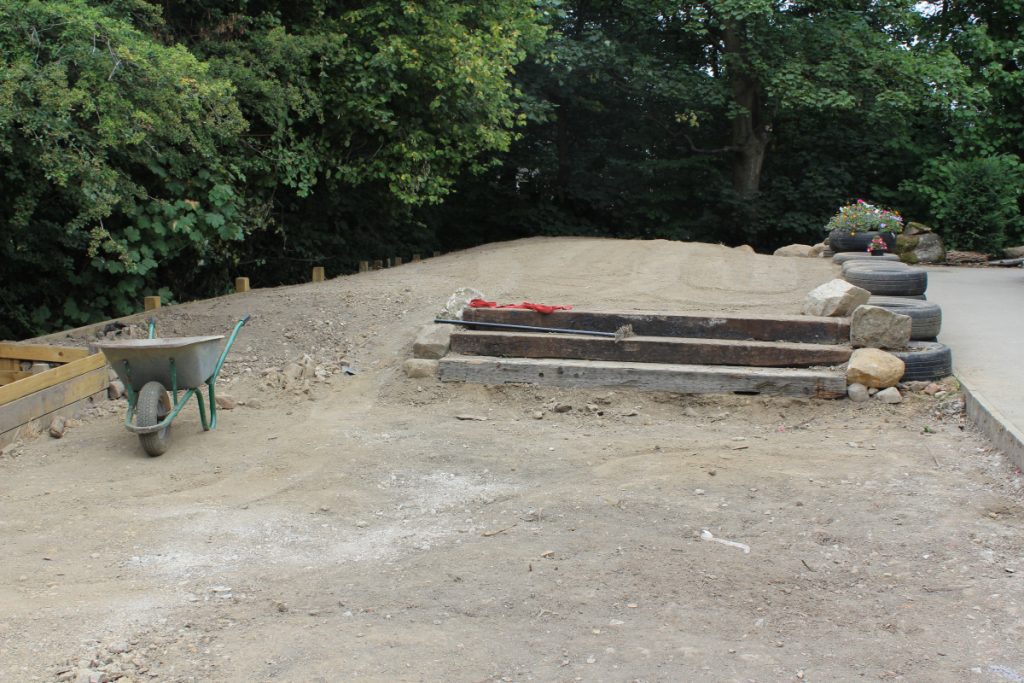
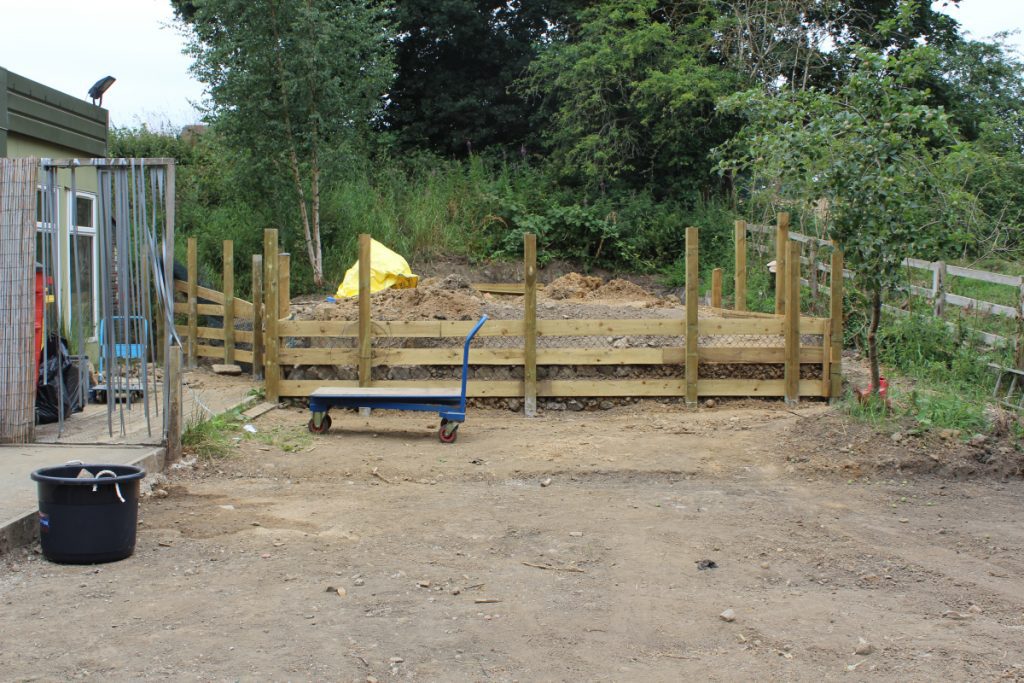
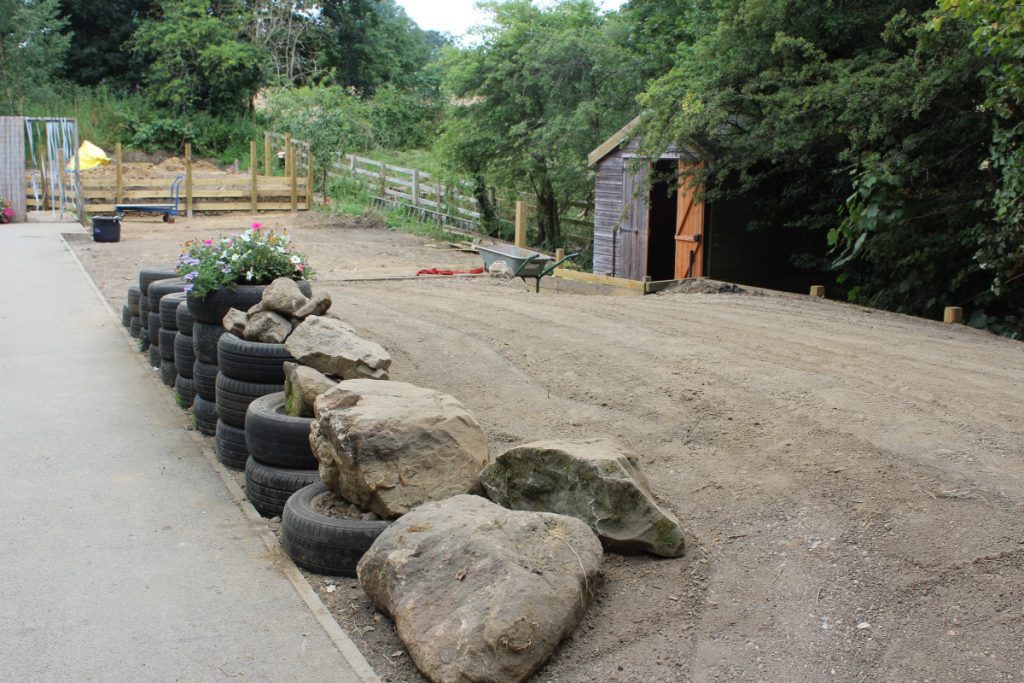
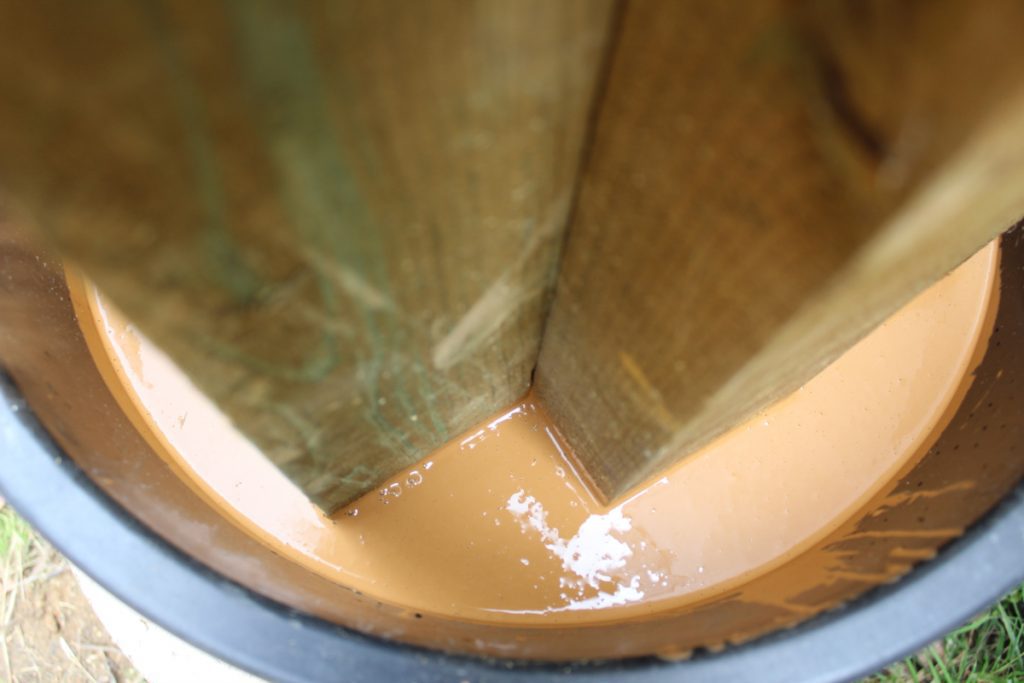

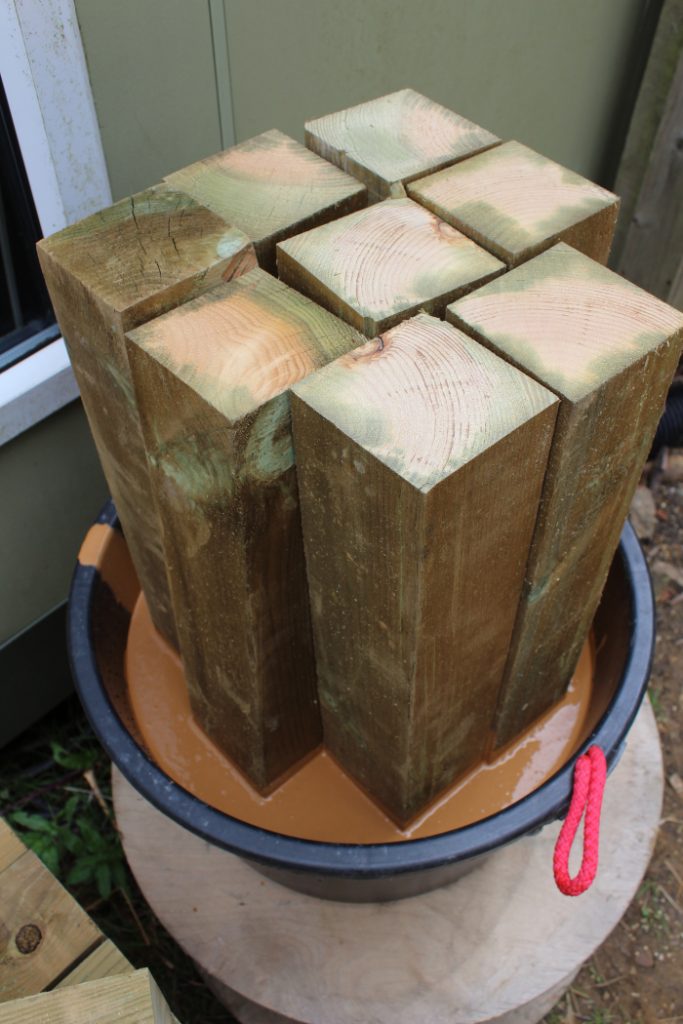
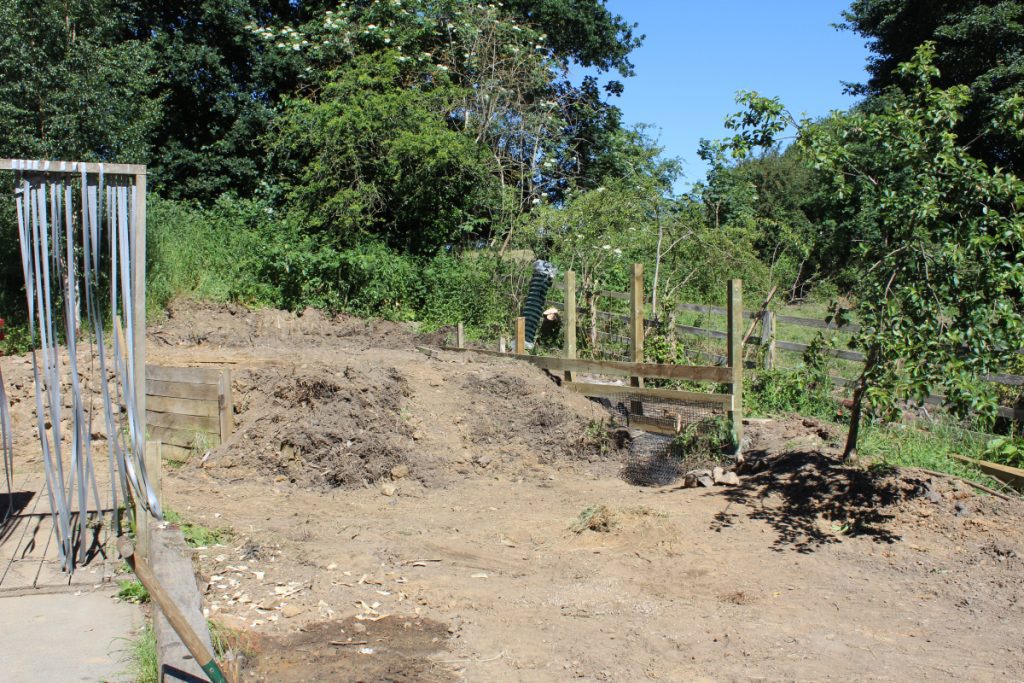
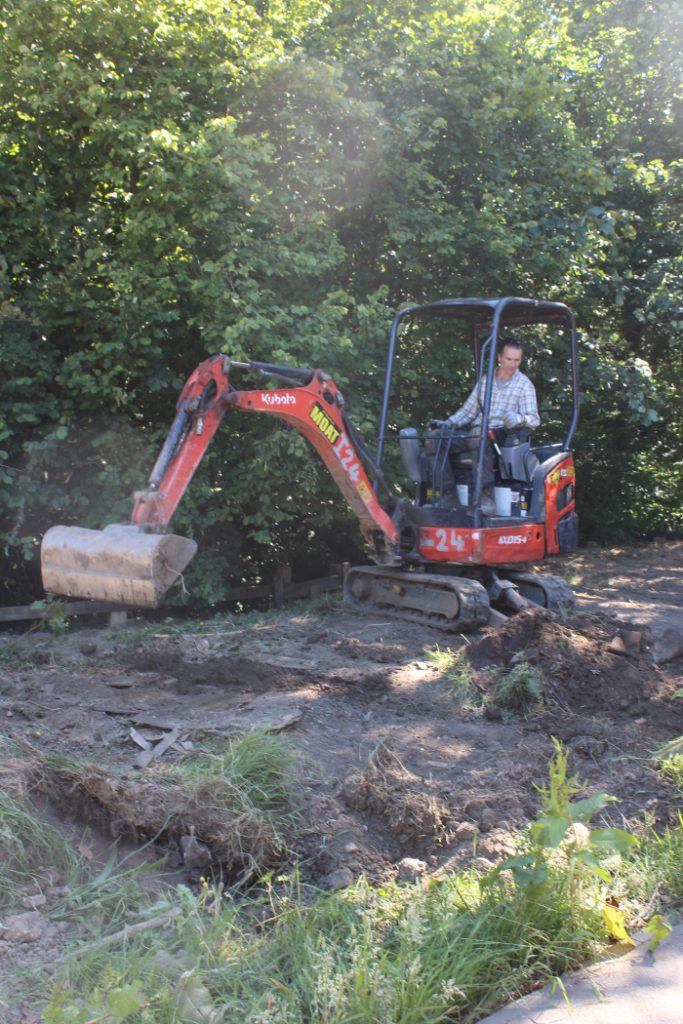
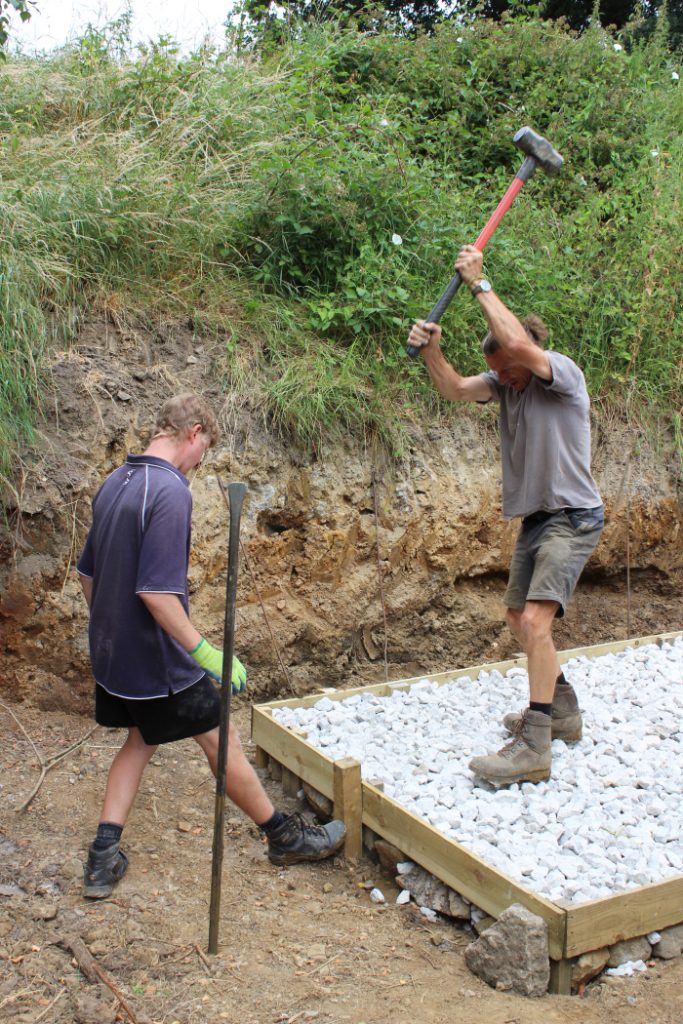
Saturday 7th July
We had a really wonderful day down at Inspirations on Saturday for the Horsforth Walk of Art and to celebrate our name change. Art, music, sunshine and food were the perfect ingredients to a perfect day…. enjoy the photos and thank you to all who helped out and came along. If you were lucky enough to get a packet of seeds from us don’t forget to send us your pictures when they start growing.
Walk of Art

Join us on Saturday 7th July for our opening day with live music from the amazing Biscuit Head and the Biscuit Badgers at 2.30pm.
Expect a clay workshop, a needle felted display, food and drink, campfire with marshmallow toasting and a freebie for the first 100 families to come.
Join us in the sunshine for a day of art and music.
